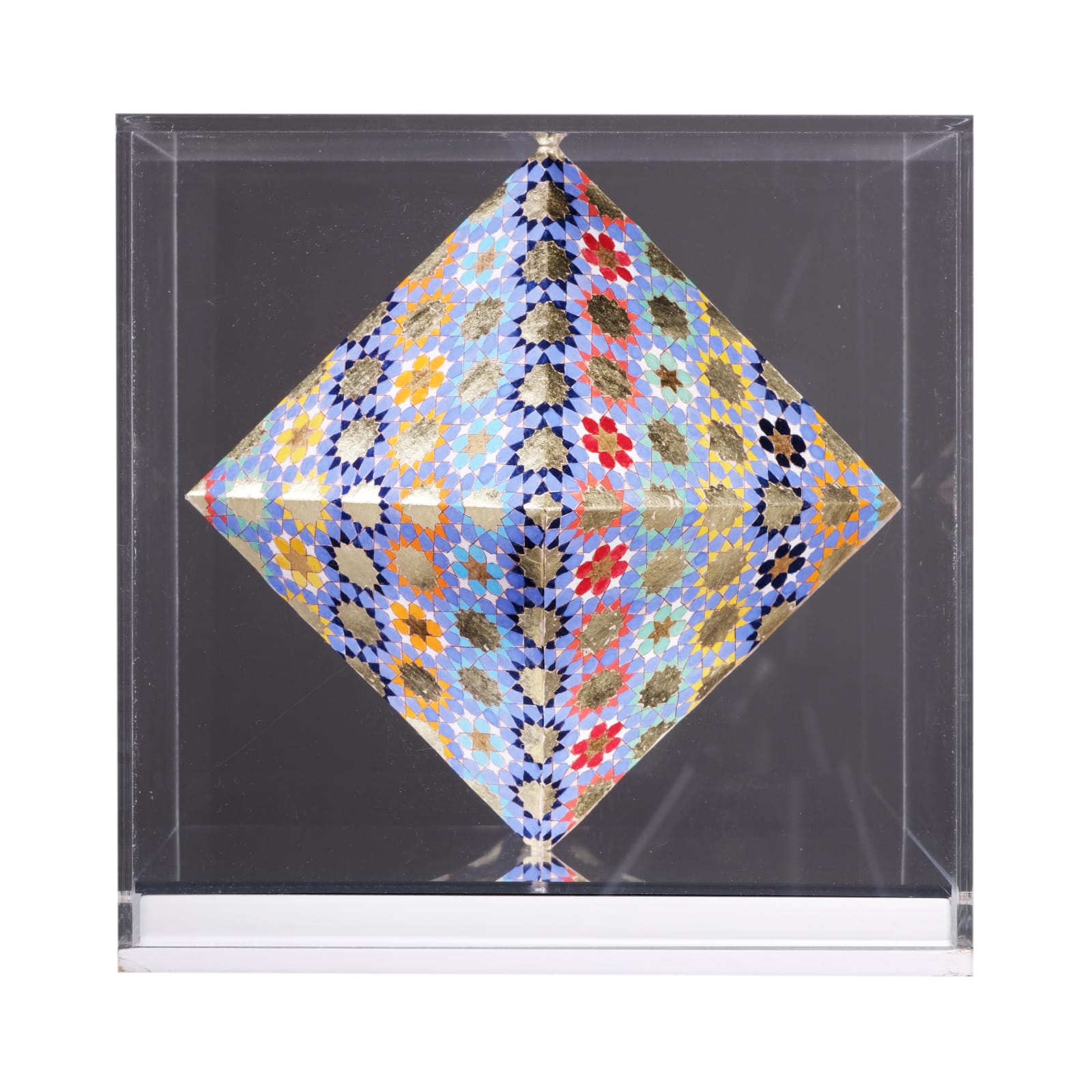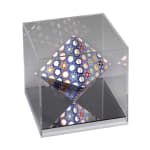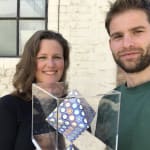Jethro Buck and Elisabeth Deane
Octahedron, 2020
Perspex cube, natural pigments and gold leaf on handmade Indian hemp paper and Perspex mirror
20x20x20cm
Copyright The Artist
Sold
Further images
Together, Buck and Deane have created Octahedron for Cure3: “It seemed fitting to place an octahedron inside this cube. An octahedron is known as the ‘dual’ shape of a cube....
Together, Buck and Deane have created Octahedron for Cure3: “It seemed fitting to place an octahedron inside this cube. An octahedron is known as the ‘dual’ shape of a cube. A cube fits perfectly inside an octahedron and vice versa. Every point of the octahedron meets the very centre of all the cubes faces. These two shapes are two of the five shapes known as the Platonic solids. Plato hypothesised and philosophised about these shapes that fit ‘perfectly’ within a sphere. Whereby every angle, every length and every shape comprising the surfaces of the solids are equal, there are only five 3-D shapes in the known universe that meet this criteria.”
Aided by geometry teachers Paul Marchant and Jonathan Horning, the artists have used a compass and ruler for the 2-D geometry on the octahedron’s surface. The use of mineral pigments for the shapes and 18 karat and 24 karat gold leaf for the stars add to our sense of connection to both science and the natural world.
Aided by geometry teachers Paul Marchant and Jonathan Horning, the artists have used a compass and ruler for the 2-D geometry on the octahedron’s surface. The use of mineral pigments for the shapes and 18 karat and 24 karat gold leaf for the stars add to our sense of connection to both science and the natural world.





